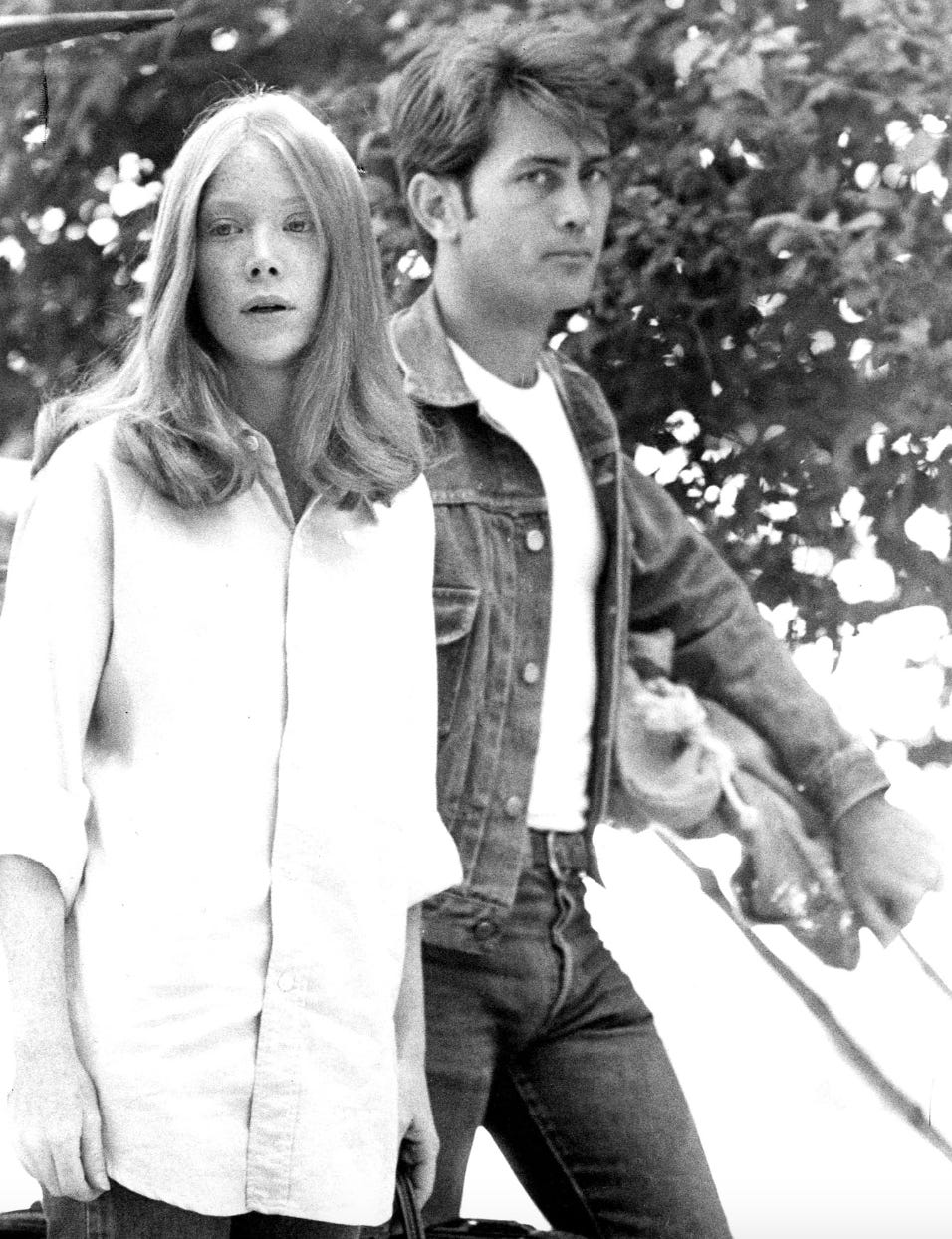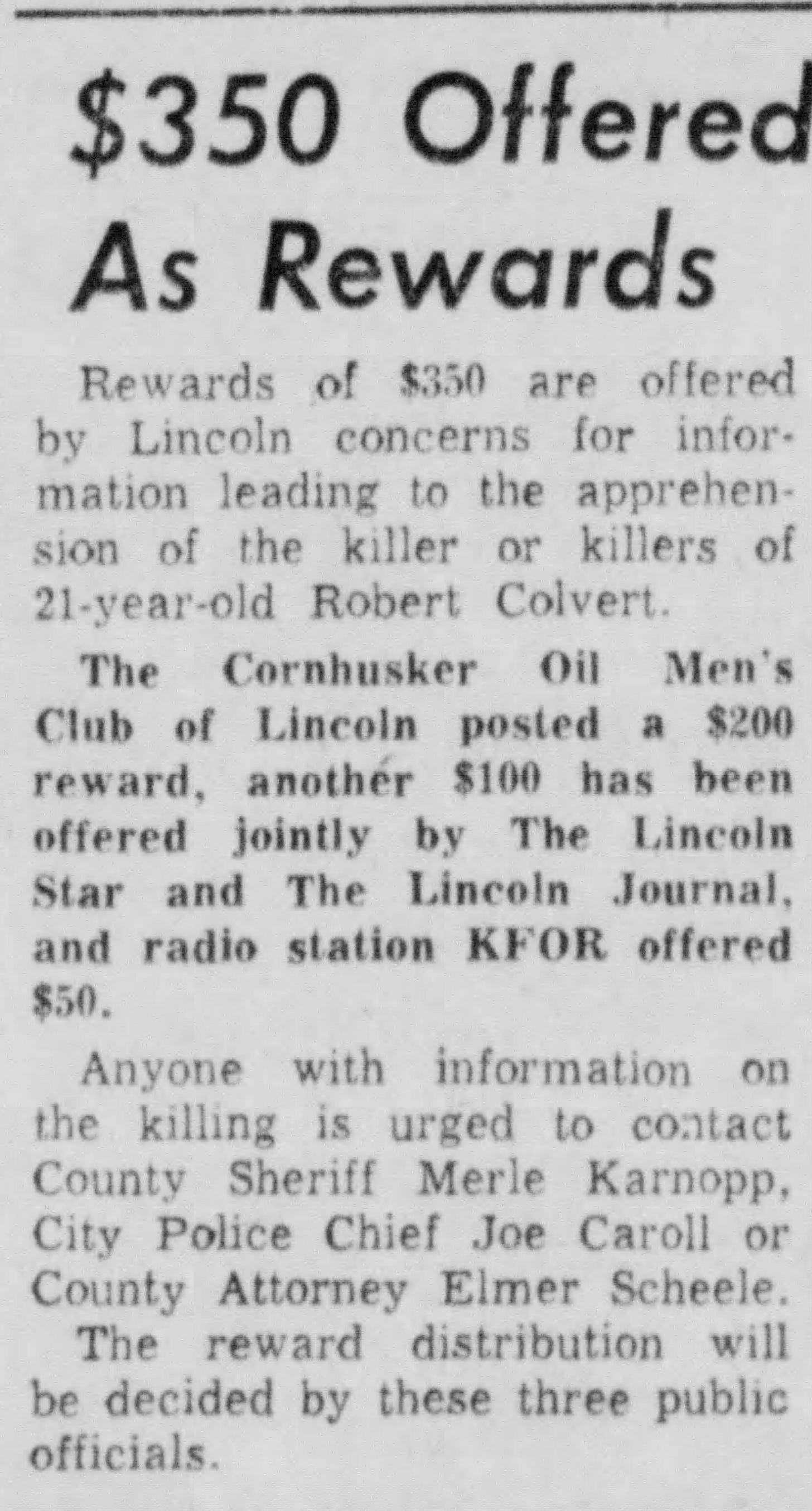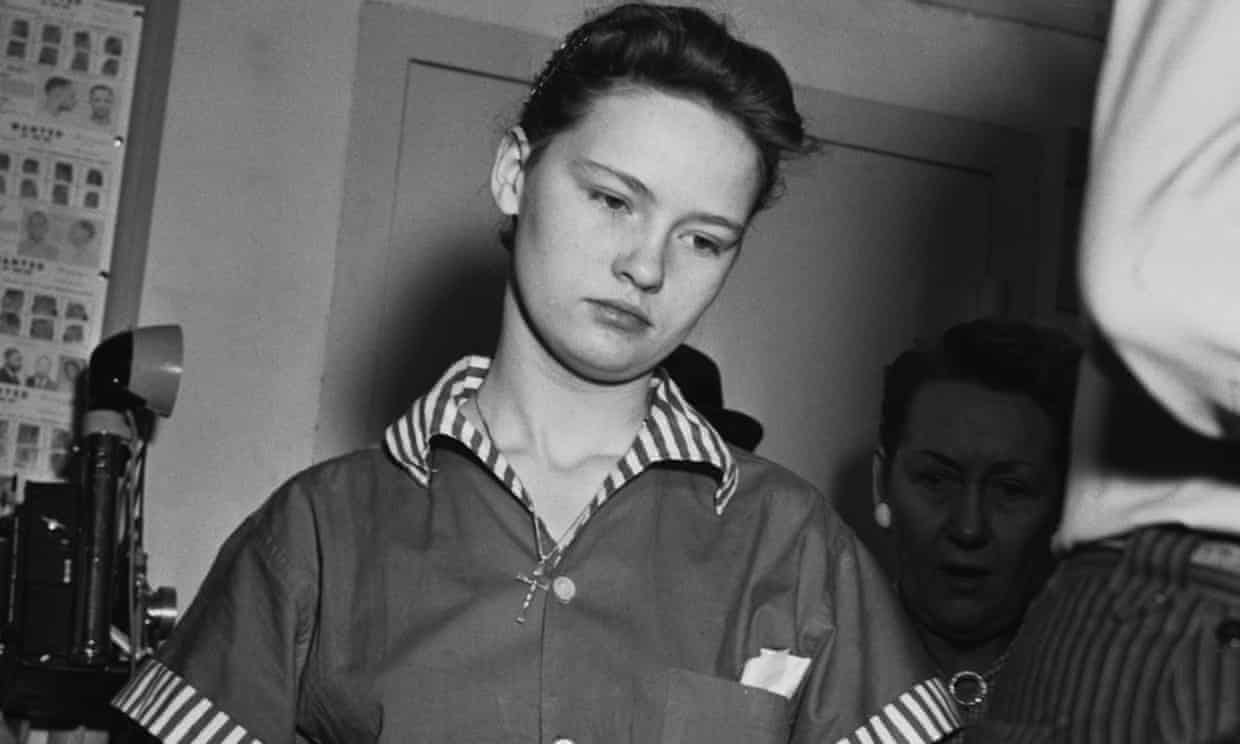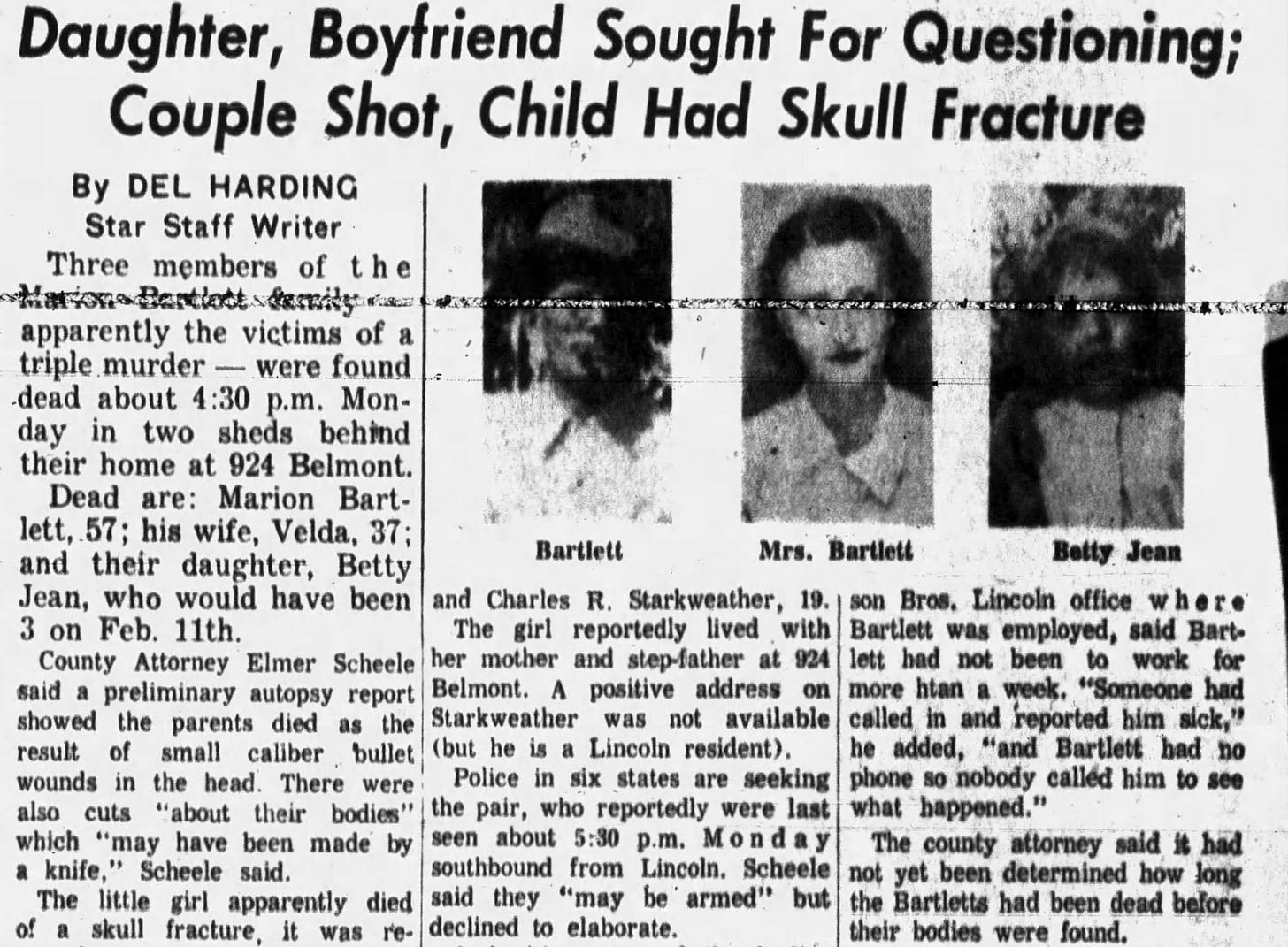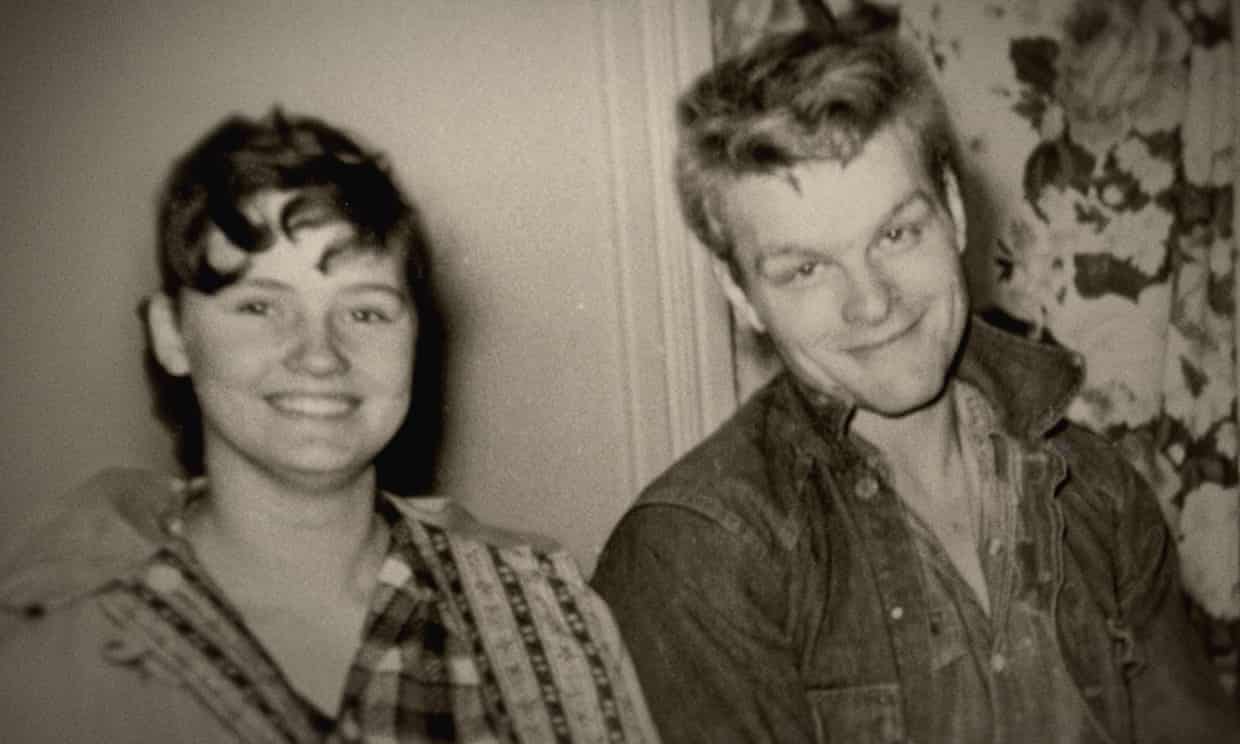Teenage Terror: The Shocking True Story Behind the 1973 Film "Badlands"
Terrence Malick's 1973 debut film Badlands was widely acclaimed for its acting and stunning visuals. What some may not know is that the film was influenced by a real life crime spree 15 years earlier
Background
Badlands is the debut film from writer and director Terrence Malick. Released in October 1973, it stars Martin Sheen and Sissy Spacek. The film was widely acclaimed, and in 1993, it was selected for preservation by the United States National Film Registry as being “culturally, historically, or aesthetically significant.”
Plot Overview
The film begins in the small town of Fort Dupree, South Dakota. Kit Carruthers (Martin Sheen) is a 25-year-old garbage man who meets and seduces 15-year-old Holly Sargis. (Sissy Spacek)
The two begin spending a lot of time together, much to the displeasure of Holly’s father, who forbids Kit from seeing Holly. One day, Kit breaks into the Stargis house and shoots and kills Holly’s father in front of her.
Rather than reacting in horror, Holly helps Kit burn down the house and goes on the run with him. They hide out in the woods where they build a treehouse and live off the land.
While out there, Kit ambushes and kills three bounty hunters who were looking for them. They then go on the run again, during which time Kit murders several more people while Holly tags along. The audience is given an insight into Holly’s thinking as her character narrates many scenes in the film.
Though she does not directly participate in any of the violence, she is chillingly indifferent about it until the end of the film, when she loses interest in Kit, not because he is a murdering psychopath, but because she has grown tired of the hardships of living on the run.
At the end of the film, Kit is captured after a high-speed chase with the police. We see that, like Holly, Kit, too, has grown weary of life on the run and allows himself to be captured.
In the closing scenes, we see Kit laughing and joking with the same officers who had previously been chasing him. He is being treated like a quasi-celebrity and is relishing it. We learn in the final narration that Kit was executed six months after his capture and that Holly was given probation.
Though much of the film is fiction, several of the character elements and scenes were pulled directly from the story of a notorious real-life spree killer named Charles Starkweather and his young girlfriend/hostage(?) Caril Fugate.
Based on Real Events
Charles Starkweather was born and raised in Lincoln, Nebraska. The fourth of seven children, he was described by peers as somewhat of a bully who was prone to outbursts of anger. A former friend recalled that Charles could be kind and generous if he liked you, but he also had another side to him that “could be mean as hell and cruel.”
His father worked as a carpenter, but was frequently out of work due to arthritis in his hands. His mother worked as a waitress. Starkweather’s parents would later divorce, with his mother, Helen, citing extreme cruelty.
Starkweather’s troubled personality worsened as he reached his teenage years. He dropped out of high school during his senior year and began working at a newspaper warehouse. During this time, the 18-year-old Starkweather began a relationship with a 13-year-old girl named Caril Ann Fugate.
Because the warehouse where he worked was close to Fugate’s school, he would visit her frequently. Caril’s mother, Velda Bartlett, and stepfather, Marion Bartlett, disapproved of their daughter seeing Starkweather and made their feelings clear.
First Murder
In the early morning hours of December 1, 1957, Charles Starkweather, carrying a shotgun and dressed in a black jacket and gloves with a red bandanna covering his face, robbed a night clerk at the Crest gas station in Lincoln.
The clerk, Robert Colvert, was ordered to turn off the outside lights and fill a canvas bag with cash from the register. After emptying the register of $150 in cash and $10 in coins, Starkweather ordered Colvert into his car and forced him to drive to a remote frozen dirt road.
Colvert was then shot after attempting to grab the shotgun. As he was lying wounded on the road, Starkweather shot him in the back of the head, killing him. He then fled and returned home. The following day, he threw the murder weapon off a bridge. Several days later, he had his car repainted black and changed the tires to avoid detection.
Bartlett Family Murders
At the time of the Colvert murder, Starkweather had been working for a garbage collection company, but by early January 1958, he had lost his job and was broke, often sleeping in his car.
He and Caril were constantly arguing, and during one instance, he dragged her off her school bus in front of everyone on board.
On the afternoon of January 21, 1958, Starkweather borrowed his brother’s rifle and went to the home of Caril Fugate’s parents, Marion and Velda Bartlett, where he shot and killed them both and murdered their two-year-old daughter. He then hid all three bodies near a chicken coop behind the house.
According to later testimony from Caril Fugate, when she returned home that day from school, Starkweather was waiting for her with a gun and told her that he had taken her family hostage, and that they would not be hurt as long as she cooperated with him.
This account has been disputed, as at certain points after his capture, Starkweather told police that Carli was not involved and did not know what was happening, but then changed his story and said she had full knowledge and was a direct participant. This would become a key point during her trial.
Over the next six days, Starkweather and Fugate remained in the Bartlett house. During that time, several people stopped by, but were turned away by Caril. After growing suspicious, Caril’s grandmother alerted the police that something was wrong. On the morning of January 27, Starkweather and Fugate left the Bartlett home and retrieved Starkweather’s car.
Killing Spree
That afternoon, after stopping at a service station, Starkweather and Fugate drove to the home of a family friend named August Meyer. As they approached the farm, their car became stuck in the mud. After walking to the farm to ask Meyer for assistance, Starkweather shot and killed Meyer and his dog.
That same afternoon, the three bodies were discovered at the Bartlett house, and an alert was put out for Starkweather’s car.
That evening, Starkweather and Fugate are picked up by two teenagers, Robert Jensen and Carol King, after they stopped to assist. Unaware that they had just picked up a wanted killer, Jensen drove the pair to a service station to use the phone.
Starkweather then ordered Jensen at gunpoint to drive towards Lincoln. Later that night, they stopped at a storm cellar near an abandoned school, and Starkweather ordered Jensen and King to enter. He then shot and killed them both as Fugate sat in the car.
The following morning, on January 28, the two drove Jensen’s car to an upscale area of Lincoln, where they entered the home of Chester Ward. They stayed there for several hours before Starkweather shot and killed Ward and stabbed his wife, Clara, and their maid, Lilyan Fencl, to death. (Starkweather would later claim that Fugate murdered Fencl)
The two then fled with Ward’s car and other stolen goods taken from the house. By this point, a massive manhunt was underway, with numerous law enforcement agencies and vigilante groups searching for Starkweather and Fugate. The local sheriff had even formed a posse and deputized them.
After crossing the border into Wyoming, Starkweather encountered a traveling salesman sleeping in his car outside Douglas, Wyoming. Starkweather then shot and killed the man, and he and Fugate attempted to take his car. However, Starkweather was unable to release the car’s parking brake.
Arrest
Another driver, unaware of the situation, stopped to assist, and when he approached, Starkweather pointed his rifle at the man. The two men then wrestled for the gun.
Meanwhile, Wyoming Deputy Sheriff William Romer just happened to be driving past when he saw the altercation in the middle of the highway. When Caril Fugate saw Romer, she ran towards him and quickly explained what was happening. Romer radioed ahead to have a roadblock set up.
After a high-speed chase involving another Sheriff and the Douglas Police Chief, shots were fired at the car driven by Starkweather. The shots shattered the car glass, cutting Starkweather and causing him to stop and surrender.
Trial and Execution of Charles Starkweather
Following his arrest in Wyoming, Starkweather chose to be extradited to Nebraska. He and Fugate were driven back to Lincoln, where Starkweather wrote his confession, readily admitting to his crimes and showing no remorse. He also claimed that Fugate committed two of the murders.
Her full involvement and culpability would become a significant point of contention during her trial.
Starkweather was tried first, with his trial beginning in May 1958. Against the advice of his legal counsel, he refused to plead insanity, which would have likely been the only way for him to avoid the death penalty if convicted.
On May 22, 1958, Starkweather was found guilty of the first-degree murder of Richard Jensen. He was sentenced to death, and on June 25, 1959, he was executed in the electric chair at the Nebraska State Penitentiary.
Trial of Caril Fugate
Caril Fugate’s lawyer, John McArthur, petitioned for her to be tried in juvenile court, which would have been standard procedure. However, the Supreme Court of Nebraska ruled that Fugate, who was 14 years old at the time, must be tried as an adult.
Her trial began in late October 1958. She steadfastly denied any involvement in the murders and maintained that she had been a hostage who was afraid for her life. During her trial, Starkweather testified against her, refuting her claims. Despite her lawyer’s best efforts, she was found guilty of murder on November 21, 1958, and sentenced to life in prison.
McArthur continued to file numerous appeals on Fugate’s behalf following her conviction, citing several improprities during the course of her trial. In October 1973, her life sentence was commuted, and in June 1976, she was released on parole after serving 18 years in prison.
Closing Thoughts
The case of Charles Starkweather and Caril Fugate was one of the first cases of “spree killers” to garner widespread public attention. The public was both fascinated and repulsed by the seemingly senseless nature of the crimes.
Their crimes have been covered extensively in books, documentaries, television shows, songs, and several films, including Badlands and Natural Born Killers.
Sources:
“Charles Starkweather.” Wikipedia, Wikimedia. https://en.wikipedia.org/wiki/Charles_Starkweather
“Caril Ann Fugate.” Wikipedia, Wikimedia. https://en.wikipedia.org/wiki/Caril_Ann_Fugate
“Badlands (Film).” Wikipedia, Wikimedia. https://en.wikipedia.org/wiki/Badlands_(film)
“Charles Raymond Starkweather [RG3423.AM]” Nebraska State Historical Society, https://history.nebraska.gov/collection_section/charles-raymond-starkweather-rg3423-am/
Wischmann, Lesley. “The Killing Spree that Transfixed a Nation: Charles Starkweather and Caril Fugate, 1958.” WyoHistory.org, 8 November 2014, https://www.wyohistory.org/encyclopedia/killing-spree-transfixed-nation-charles-starkweather-and-caril-fugate-1958






